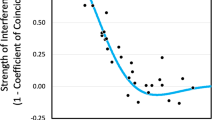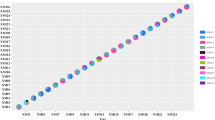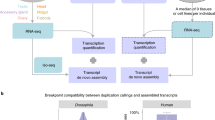Abstract
IN chromosomes II and III of D. melonogoster Owen1 found good agreement with the interference function 4u exp(− 2u) which is distributed as ¼χ2 4. In the X-chromosome the position was more doubtful, possibly due to misclassification, which tends to inflate the rare double recombinant classes in multipoint linkage tests, hence altering the estimates of the intensity of interference.
This is a preview of subscription content, access via your institution
Access options
Subscribe to this journal
Receive 51 print issues and online access
$199.00 per year
only $3.90 per issue
Buy this article
- Purchase on SpringerLink
- Instant access to full article PDF
Prices may be subject to local taxes which are calculated during checkout
Similar content being viewed by others
References
Owen, A. R. G., Ph.D. Dissertation (University Library, Cambridge, 1948).
Parsons, P. A., Nature, 179, 161 (1957).
Parsons, P. A., Genetica, 29, 222 (1958).
Owen, A. R. G., “Adv. in Genet.”, 3, 117 (1950).
Whittinghill, M., J. Cell. Comp. Physiol., Supp. 2, 45, 189 (1955).
Spassky, B., Zimmering, B., and Dobzhansky, Th., Heredity, 4, 189 (1950).
Payne, L. C., Proc. Roy. Soc., B, 144, 528 (1956).
Parsons, P. A., Heredity, 12, 77 (1958).
Author information
Authors and Affiliations
Rights and permissions
About this article
Cite this article
PARSONS, P. Genetical Interference in Drosophila spp.. Nature 182, 1815–1816 (1958). https://doi.org/10.1038/1821815b0
Issue date:
DOI: https://doi.org/10.1038/1821815b0
This article is cited by
-
Crossover- und Chromatiden-Interferenz beiPodospora Anserina (CES.) Rehm
Zeitschrift für Vererbungslehre (1962)



